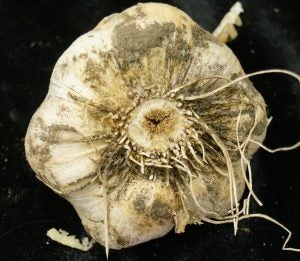 Fusarium basal plate/bulb rot: an emerging disease complex of circumglobal importance
Fusarium basal plate/bulb rot: an emerging disease complex of circumglobal importance
Fusarium basal plate rot is emerging as a driver of significant losses in garlic seed and fresh market industries, as well as in fresh market onion production (seed impacts unclear). Development of effective management is hindered by a poor understanding of pathosystem biodiversity and disease biology in field and post-harvest production, in the interconnected seed and fresh market industries, and absence of diagnostic and detection tools.
In California, research efforts have thus far been focused primarily on garlic, as a neglected and highly impacted system. However, as a producer of both seed and fresh market production for garlic and onions, as well as fresh market leeks, California is uniquely suited to study basal plate rot etiology, ecology and management across multiple allium crops and production systems. Moving forward, research questions aim to encompass all allium production systems.
Current knowledge gaps in the garlic basal plate rot disease cycle

Fusarium basal plate rot of garlic presentation 2022
Research questions moving forward
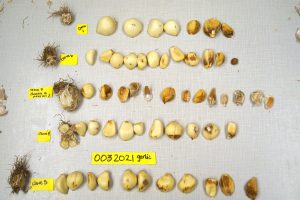 Understanding pathosystem biodiversity across allium crops to illuminate primary pathogen targets in different industry sectors, and enable development of detection/diagnosis tools.
Understanding pathosystem biodiversity across allium crops to illuminate primary pathogen targets in different industry sectors, and enable development of detection/diagnosis tools.
(1) Evaluating diversity of Fusarium species and strains affecting different allium crops (garlic, onion, leek): effector (SIX) gene diversity, phylogentic/genomic diversity, clonal diversity (somatic compatibility), host specificity
(2) Within the above, characterizing differential pathosystem composition between seed, fresh market and post-harvest systems.
(3) Use complimenting pathogenomic and ecological analyses to identify pathogen-specific diagnostic regions and translate into diagnostic and detection tools (eg., qPCR, RPA).
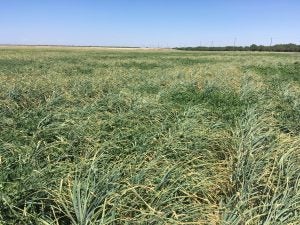 Roles of host phenology, horticultural practices and environment in driving shifts in pathosystem composition (sucessional processes) and disease development in the field and post-harvest, to identify management targets
Roles of host phenology, horticultural practices and environment in driving shifts in pathosystem composition (sucessional processes) and disease development in the field and post-harvest, to identify management targets
(1) Assessing the roles of host phenology, horticultural practices and environment in faciliating pathogen colonization and disease development in the field and post-harvest.
(2) Within the above, understanding the relative roles of biotic factors (eg. insects) and abiotic factors (eg. nitrogen, salinity, harvest wounds) in facilitating initial asymptomatic (endophytic) infection and subsequent shifts to necrotrophic infection (rot). Use to identify predisposing conditions representing management targets
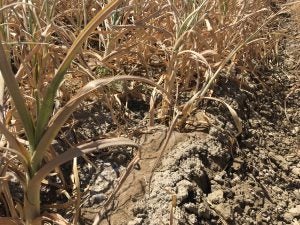
(3) Determining how dominant species (F. proliferatum, F. oxysporum) differ in responses to biotic and abiotic conditions (eg, temperature, moisture, host phenology). Use to identify times of year when F. proliferatum and F. oxysporum are most active.
(4) Elucidating the relative importance of seed borne infection vs. soil inoculum in the disease cycles for F. oxysporum and F. proliferatum.
Development of management strategies for basal plate rot across the production continuum (seed, fresh market, post-harvest)
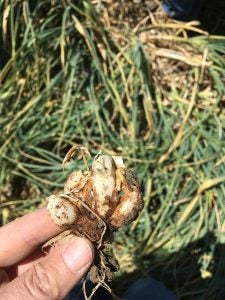 (1) Based on identified target management periods in the field, evaluate targeted chemical and biological treatment strategies for F. prolieratum and F. oxysporum.
(1) Based on identified target management periods in the field, evaluate targeted chemical and biological treatment strategies for F. prolieratum and F. oxysporum.
(2) Evaluate efficacy of post-harvest management methods (temperature control and ozone) in managing basal plate rot; examine differential Fusarium species responses.
(3) Evaluating efficacy of seed treatment strategies in eradicating pathogen infections (heat, light, ozone, chemicals, biologicals).
